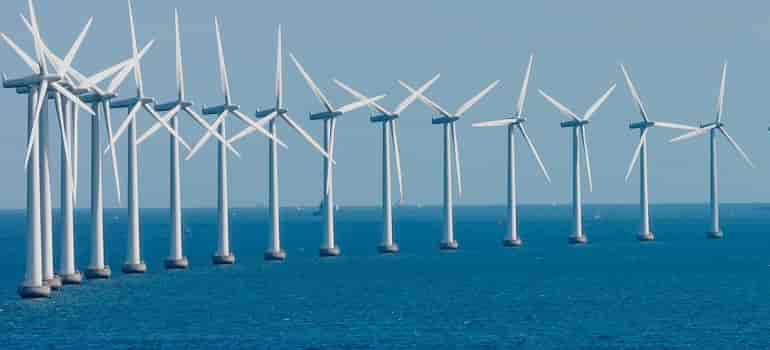The Global Wind Energy Council in its second edition of its annual Supply Side Analysis 2019 report on its market intelligence platform noted that 22,893 wind turbines were installed globally in 2019 produced from 33 suppliers and accounting for over 63 GW of capacity, a new supply side record in terms of capacity for the industry.

Vestas continues to hold on to its place as top supplier in 2019, accounting for 18 per cent of all wind turbines installed in 2019, thanks to its global diversification strategy with installations in more than 40 countries.
Siemens Gamesa Renewable Energy moved up one position to second place, with the supplier doubling its offshore wind installation in 2019 and expanding its geographic coverage. Goldwind fell one position to third place despite the company increasing its annual installations by 19 per cent in 2019 thanks to an installation rush in its home market, China.
Of the top fifteen wind turbine suppliers in 2019, ten installed offshore wind turbines last year, accounting for 99.9 per cent of the record 6.1 GW of offshore wind capacity installed in 2019. Last year was also the first time we saw a purely offshore wind supplier, MHI Vestas, break the global top fifteen, demonstrating the increasingly important role that the offshore industry is playing to drive wind power growth.
Ben Backwell, CEO of GWEC, said: “We are continuing to see market consolidation for turbine suppliers globally, with the number of suppliers declining from 37 in 2018 to 33 in 2019. At the same time, the top six turbine vendors collectively increased their market share from 70 per cent in 2018 to 72 per cent in 2019. Within this competitive landscape, current trends favour companies that shift from being solely manufacturers to evolving into holistic systems and solution providers to allow for greater market diversification”.
“The wind sector is a leader in innovation and technology, and it can clearly be seen in the impressive increases in turbine sizes. In 2019, the average turbine size surpassed 2,750 kW and in some markets like Denmark and the UK, turbines passed the 5,000 kW milestone thanks to offshore wind development. This is a 72 per cent increase for average turbine size in the past decade alone, and is a testament to the industry’s leadership in technology innovation and maturity of the global sector”.
Feng Zhao, Strategy Director of GWEC, said: “More than 63 GW wind power capacity was delivered and installed based on supply side data in 2019, a new record for the industry. 2020 was forecasted to be another record breaking year, however, disruption of the global supply chain and delays on wind project execution has forced major stakeholders in the wind industry to withdraw their 2020 financial and production guidance as well as adjust their market outlook for the year”.
“In 2019, eight Chinese turbine vendors were included in the top fifteen supplier ranking, but the top two spots were held by European suppliers Vestas and Siemens Gamesa Renewable Energy. With the COVID-19 crisis now disrupting supply chains, manufacturing and project execution globally, it is likely that these rankings will shift in 2020 depending on how quickly countries and businesses can recover from the pandemic”, he added.
GE Renewable Energy and Envision remain in the fourth and fifth position respectively for global market share, both showing increases thanks to installation rushes in their home markets of US and China. Mingyang and Nordex Acciona also benefited from these installation rushes, both moving up one position to sixth and seventh place respectively. Enercon dropped by two positions to eight place in 2019, primarily due to a significant decline in installations in its home market, Germany. Windey entered the top ten for the first time ever as the supplier doubled its installations in China, moving up four positions to ninth place. Rounding out the top fifteen wind turbine suppliers in 2019 are Chinese suppliers Dongfang, Sewind, CSIC Haizhuang and United Power along with German supplier Senvion and the Danish-Japanese joint venture MHI Vestas.

